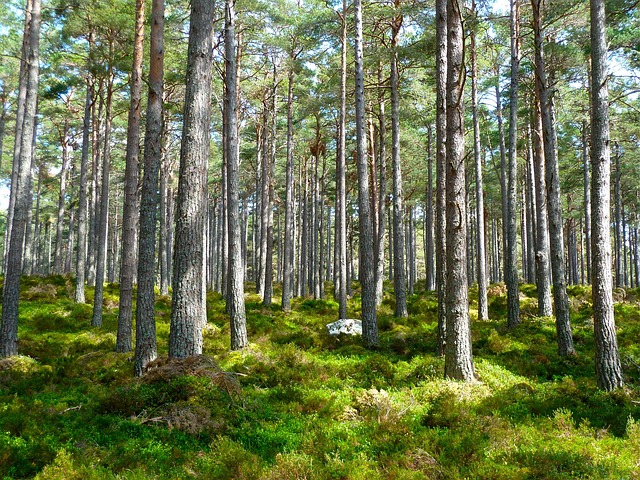
Ecology of Forest Mammals Protecting Habitat and Biodiversity
Forests cover nearly a third of the planet’s land area and host a staggering array of plant and animal life. Among the most charismatic and ecologically vital components of these ecosystems are mammals that inhabit both temperate and tropical woodlands. Their daily movements, foraging habits, and reproductive behaviors shape the structure of forests, influence plant regeneration, and regulate the flow of nutrients. Understanding the ecology of forest mammals is therefore essential for conserving the intricate webs of life that sustain biodiversity, ecosystem resilience, and human well‑being.
Ecosystem Services Provided by Forest Mammals
Forest mammals contribute to a suite of ecosystem services that are often invisible yet critical. They act as seed dispersers, pollinators, predators, and scavengers, each role reinforcing the other in a delicate balance.
- Seed dispersal: Many mammals, such as primates, rodents, and large ungulates, consume fruits and later deposit seeds in new locations, enabling plant colonization and genetic exchange across the landscape.
- Insect control: Predatory mammals like foxes, weasels, and certain bat species reduce insect populations, thereby protecting trees from pest outbreaks and reducing the need for chemical interventions.
- Scavenging and carcass removal: Carnivores and omnivores consume carcasses, preventing disease spread and recycling nutrients back into the soil.
- Habitat modification: Burrowing rodents create tunnels that improve soil aeration, while tree‑climbing mammals can create canopy pathways that affect light distribution.
These services illustrate how the ecology of forest mammals is tightly interwoven with the overall health of forest ecosystems.
Food Web Dynamics and Nutrient Cycling
“The forest is a living network, and mammals are its keystone links.”
In forest food webs, mammals occupy multiple trophic levels. Herbivorous species such as deer, rabbits, and certain marsupials feed on foliage, seedlings, and grasses, creating browsing pressure that can limit tree regeneration if unbalanced. Meanwhile, carnivorous mammals like leopards, jaguars, and wolverines regulate populations of herbivores, preventing over‑grazing and maintaining plant diversity.
By moving between vegetation strata—ground level, understory, and canopy—mammals facilitate the transfer of nutrients across the vertical axis of forests. When herbivores excrete waste or when predators consume prey, nutrients are redistributed, enhancing soil fertility. This nutrient cycling sustains plant productivity, which in turn supports a wider array of organisms, including insects, birds, and microbes.
Habitat Connectivity and Seed Dispersal
Tree Species Relationships
Forest connectivity, the degree to which habitats are linked, is vital for the movement of mammals and the persistence of forest composition. Large mammals, especially those with extensive home ranges, can travel across fragmented landscapes, carrying seeds from one patch to another.
- Large ungulates such as elk and moose ingest acorns, mast, and other seeds, excreting them after traveling several kilometers. This process aids in the colonization of open areas and the expansion of forest boundaries.
- Primates, particularly those inhabiting lowland rainforests, consume a variety of fruit types and disperse seeds over long distances. Their preference for certain tree species can influence the spatial distribution and genetic diversity of those trees.
- Small mammals, like squirrels and voles, cache nuts and seeds, inadvertently creating microhabitats that later germinate. This behavior is especially important in temperate forests where seed dispersal by birds is less frequent.
Effective seed dispersal requires intact corridors that allow mammals to move freely. Habitat fragmentation not only isolates plant populations but also disrupts the ecological relationships that maintain forest structure.
Keystone Mammals and Their Impact on Biodiversity
Keystone species are organisms whose ecological role is disproportionately large relative to their abundance. In many forest ecosystems, certain mammals exhibit keystone behaviors that drive biodiversity.
- Beavers: Although often associated with wetlands, beavers build dams that create ponds, wetlands, and floodplain forests. These water bodies become hotspots for amphibians, fish, and invertebrates, increasing overall biodiversity.
- Large herbivores: Species such as bison and African antelope create grazing lawns that support a diverse understory. Their selective feeding can promote plant species turnover, reducing dominance by a single tree species.
- Predatory mammals: Apex predators like tigers, jaguars, and lions regulate herbivore populations, preventing over‑grazing and allowing a range of plant species to thrive, thereby supporting a richer assemblage of fauna.
These keystone interactions underscore how the ecology of forest mammals is not merely a component of the system but a driving force behind ecosystem diversity and stability.
Anthropogenic Pressures and Their Ecological Consequences
Deforestation and Fragmentation
Human activities such as logging, agriculture, and urban expansion have led to widespread deforestation, turning continuous forest stands into isolated patches. Fragmentation reduces the availability of habitat, alters microclimates, and creates edge effects that can favor invasive species.
For forest mammals, the consequences are multifold:
- Smaller territories mean increased competition and reduced genetic diversity.
- Isolated populations are more susceptible to local extinctions due to stochastic events.
- Fragmentation interrupts seed dispersal corridors, leading to reduced seedling recruitment and diminished forest regeneration.
Poaching and Illegal Trade
Many mammals are hunted for meat, traditional medicine, or the exotic pet trade. The loss of top predators or key herbivores can trigger trophic cascades, altering vegetation dynamics and ultimately diminishing overall biodiversity.
Climate Change
Shifts in temperature and precipitation patterns affect forest composition, which in turn influences the availability of food and shelter for mammals. Phenological mismatches—such as the timing of fruiting and the birth of young—can create nutritional gaps for mammals dependent on specific food sources.
Conservation Strategies to Protect Mammal Habitats
Effective conservation requires a multi‑layered approach that integrates science, policy, and community engagement. Several strategies have proven successful in preserving forest mammals and their ecological functions:
- Establishing protected areas and wildlife corridors that connect fragmented habitats, allowing natural movement patterns to resume.
- Implementing sustainable forest management practices that balance timber extraction with habitat preservation, such as selective logging and retention of canopy cover.
- Enforcing anti‑poaching laws and developing community monitoring programs that empower local residents to participate in wildlife stewardship.
- Restoring degraded habitats through reforestation, invasive species control, and soil rehabilitation, thereby creating conducive environments for mammalian recolonization.
- Promoting environmental education that highlights the ecological significance of forest mammals, fostering a sense of stewardship among younger generations.
By integrating these measures, conservation programs can maintain the ecological roles that mammals play while ensuring the long‑term viability of forest ecosystems.
Future Directions in Forest Mammal Ecology
Research continues to uncover the nuanced ways in which mammals influence forest dynamics. Emerging technologies such as GPS tracking, remote sensing, and environmental DNA sampling are expanding our understanding of mammalian movement patterns, diet, and population genetics.
Key research priorities include:
- Assessing how climate‑induced range shifts of mammalian species affect forest composition and structure.
- Evaluating the effectiveness of rewilding initiatives that reintroduce extinct or locally extinct mammal species into former habitats.
- Investigating the role of mesopredators in regulating invasive plant species, which may alter fire regimes and carbon sequestration.
These efforts will inform adaptive management strategies that can respond to rapid environmental changes while safeguarding the ecological balance that forest mammals uphold.


